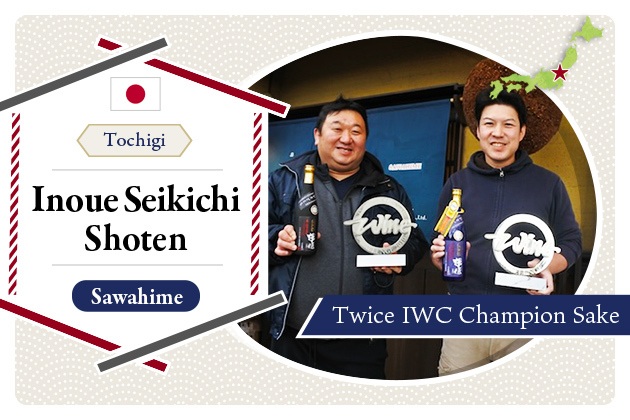
2023.10
18
Learning about pasteurization: Technology for long-term protection of freshness, and the evolution of pasteurization and sake flavors
Pasteurization (Hi-ire) is a crucial step in the process of sake brewing. Glancing at the entire brewing process, most of it involves keeping the yeast starter or the main fermentation that forms the basis of sake at low temperatures. However, in the process of pasteurization, raising the temperature of sake serves the purpose of stabilizing the quality.
In the past, the general practice was to pasteurize brewed sake before storage in the tank, and then once again pasteurize at the time of bottling before shipment. However, recent developments in pasteurization as well as refrigeration technologies have allowed distribution of various kinds of sake flavors including “nama-zume” and “nama-chozo,” only once pasteurized, and “nama” which does not undergo pasteurization at all.
What is pasteurization?
Pasteurization is the process of sterilization by low-temperature heating. Keeping a temperature around 60 to 65 degrees Celsius (140 to 149 degrees Fahrenheit) for a period of time neutralizes microorganisms such as lactic acid bacteria and the activity of yeast without compromising the sake quality. If pasteurization goes wrong, it may result in changes in flavor called “amadare” (imbalance caused by overpowering of sweetness), or in smell called “mureka” (off-aroma caused by changes in the composition of aromatic components), or in sourness and cloudiness from “hiochi-kin,” an undesirable kind of lactic acid bacteria.
This technology has been in practice since ancient times in Japan, recorded in literature from the Muromachi Period (1338-1573) (Goshu no Nikki, reportedly dated 1489). In Europe, pasteurization of any kind was not practiced until 1866, when Louis Pasteur discovered low-temperature sterilization that was applied to wine production. In the Muromachi Period, the science of enzymes and lactic acid bacteria was not known, so pasteurization practice was something that was reached as a routine part of the brewing process. It is astonishing to think that sterilization by heating existed in Japan 300 years before Europe discovered it.
Timing of pasteurization
The basic timing of pasteurization comes in two parts. First, after fining, there is “pre-storage pasteurization,” and then at the bottling of stored or matured sake, there is “pre-bottling pasteurization.” For aromatic sake such as junmai daiginjo and daiginjo, brewers may opt to pasteurize once at the time of bottling, or “bottle-pasteurization (bin-hiire).”
Pre-storage pasteurization
“Pre-storage pasteurization” refers to pasteurization performed before sake is stored in tanks. Charcoal-filtered sake passes through a hose called “jakan,” which is placed in a hot water bath before the sake is sent to tanks where it is stored. As the sake is still warm and not fit for storage, cold water is applied on the tanks to lower the temperature. Recently, instant cooling has become possible using a plate heater (see below), making possible pasteurization without losing freshness.
If the sake only undergoes this pre-storage pasteurization and not the pre-bottling pasteurization of the two opportunities, then it can be labelled “nama-zume (bottled unpasteurized).” Hiyaoroshi is known to be autumn sake, and is nama-zume, which was pressed and pasteurized in the winter, stored over the summer, and shipped without the second pasteurization.
Pre-bottling pasteurization
“Pre-bottling pasteurization” refers to pasteurization of sake that was stored in tanks before it gets bottled. Sake is passed through the jakan hose again or through a bottling machine equipped with pasteurization feature so bacteria such as hiochi lactic acid bacteria cannot survive. Sterilization just before bottling ensures the stability of sake’s flavor even if stored at room temperature. Also called heated-sake bottling, bottling happens while the sake is still at high temperature, which would affect the sterilization of bottles and ensure further stabilization of quality.
Sake that did not undergo pre-storage pasteurization but went through pre-bottling pasteurization can be labelled “nama-chozo.” Many brands sold at supermarkets or convenience stores in Japan include nama-chozo.
Bottle-pasteurization (Bin-hiire)
The previous two methods involve pasteurization before storage in the tank or bottling. On the other hand, bottle-pasteurization is a method by which unpasteurized sake is bottled, then the bottles are heated to pasteurize the sake inside the bottle. Sake is bottled in the same 1.8-liter or 720-ml bottles for shipping, then placed in containers called P-boxes (P for plastic), which then manually gets heated in a hot water bath. Aromatic sake such as daiginjo may be directly bottled after pressing (bin-gakoi) to be stored, then pasteurized in a hot water bath before shipping in those same bottles.
(*1)Image source: Sakenunoya Honkin Sake Brewery Facebook page
Bottle-pasteurization is effective in locking in the aromas at the time of heating, and said to be able to maintain freshness as it only exposes sake to pasteurization once. On another note, it is labor-intensive as bottled sake requires someone to watch the temperature changes and manually take the boxes in and out of the hot water bath, and also as the number of bottles that can be heated at one time is limited.
Due to the labor-intensive nature, the method was only applied to special sake such as competition daiginjo and junmai daiginjo in the past. However, today, an increasing number of breweries employ this method for a wider variety of sake. It is of note that in recent years pasteurizer machines have been introduced, which automates bottle-pasteurization.
Equipment used in pasteurization
A while ago, pasteurization was mainly performed using jakan hoses, although these days mechanization has reached pasteurization as well. Machines that minimize the time for heating and cooling and fine-tune temperature settings enable current sake production that avoids unintended changes in quality in the process of pasteurization.
Jakan hose
A method to pass sake in a coiled hose (jakan) steeped in hot water. The water is prepared at 60 degrees Celsius or above before sending the sake to the tank, then the tank is cooled with cold water.
This method is a guarantee to kill off microbes and hiochi lactic acid bacteria as sake is exposed to a high temperature for a long time, but it risks changes to aromas and flavor.
Plate heater
A plate heater heats sake in a similar structure as jakan. A significant difference is that it is equipped with heat exchange plates. Heat exchange is a method to cool down temperature by thermal energy exchange from high temperature to low temperature liquid using tubes or panels with high thermal conduction.
For further information on heat exchange, please refer to manufacturers’ videos.
What is a plate heat exchange equipment? (Hisaka Works, Ltd. YouTube) *in Japanese
The temperature of sake that was raised by pasteurization from 60 to 65 degrees Celsius is lowered quickly by heat exchange with pre-pasteurization cold sake before being sent to the tank. This method resolves the challenge of jakan pasteurization exposing sake to high heat. Some breweries have further compressed the time to heat and cool by combining several heat exchange plates.
Pasteurizer
Advanced form of bottle-pasteurization. This method showers hot water over bottled sake to sterilize.
(2) Image source: “Kamoshi column, < Brewery Remodeling > New bottling line,” Kazuma Shuzo Co., Ltd., website.*in Japanese
The same principle can lower the temperature by showering. This newest method automates bottle-pasteurization’s manual fine-tuning of temperature.
Summary
The technology of pasteurization has progressed from simple sterilization in a hot water bath to sterilization methods that retain the flavor characteristics of unpasteurized sake while producing safe and stable quality. Pasteurization methods can have a direct impact on the flavor profiles of sake. That is why it is important to take note of the labelling of pasteurization methods such as “bin-hiire” that indicate the pasteurization method used.
*Translation support: Sake Brewers Association of North America
Pickup Articles
2019.01.18
2019.01.25
Trending Articles
Popular Articles
Recent Articles













